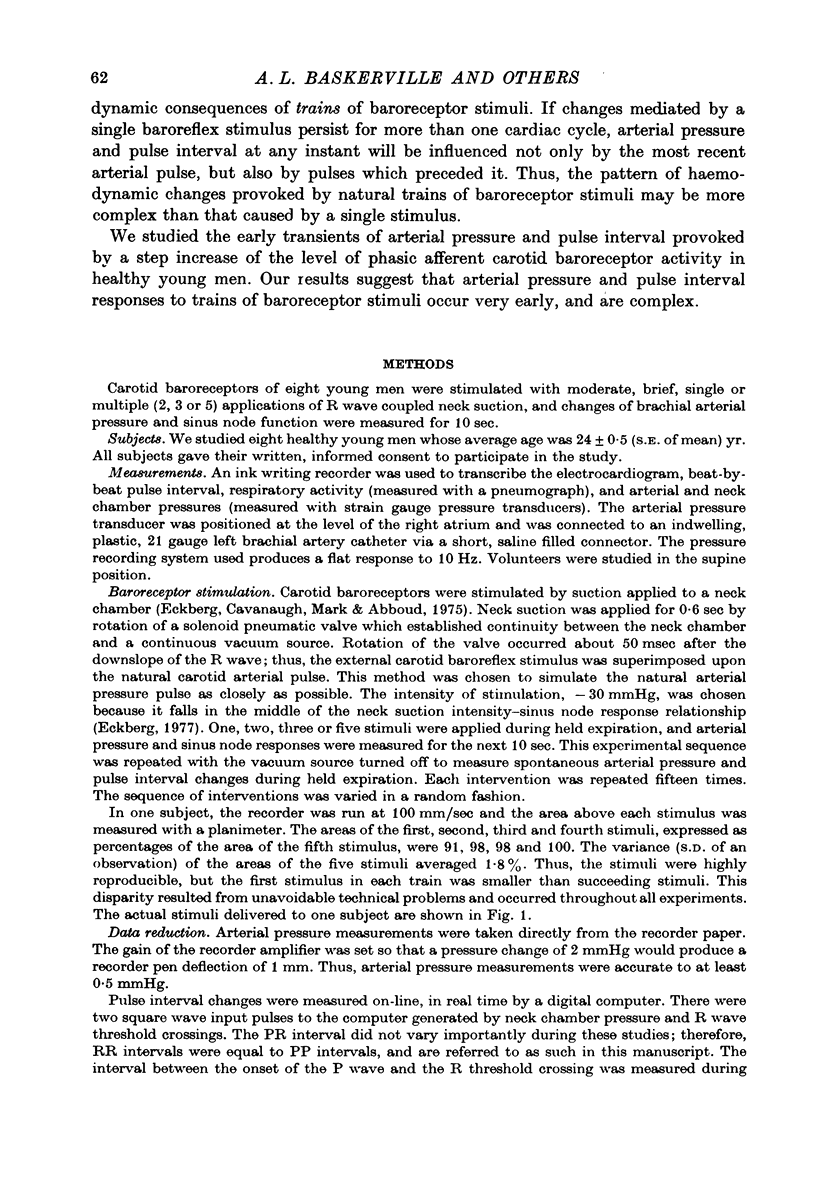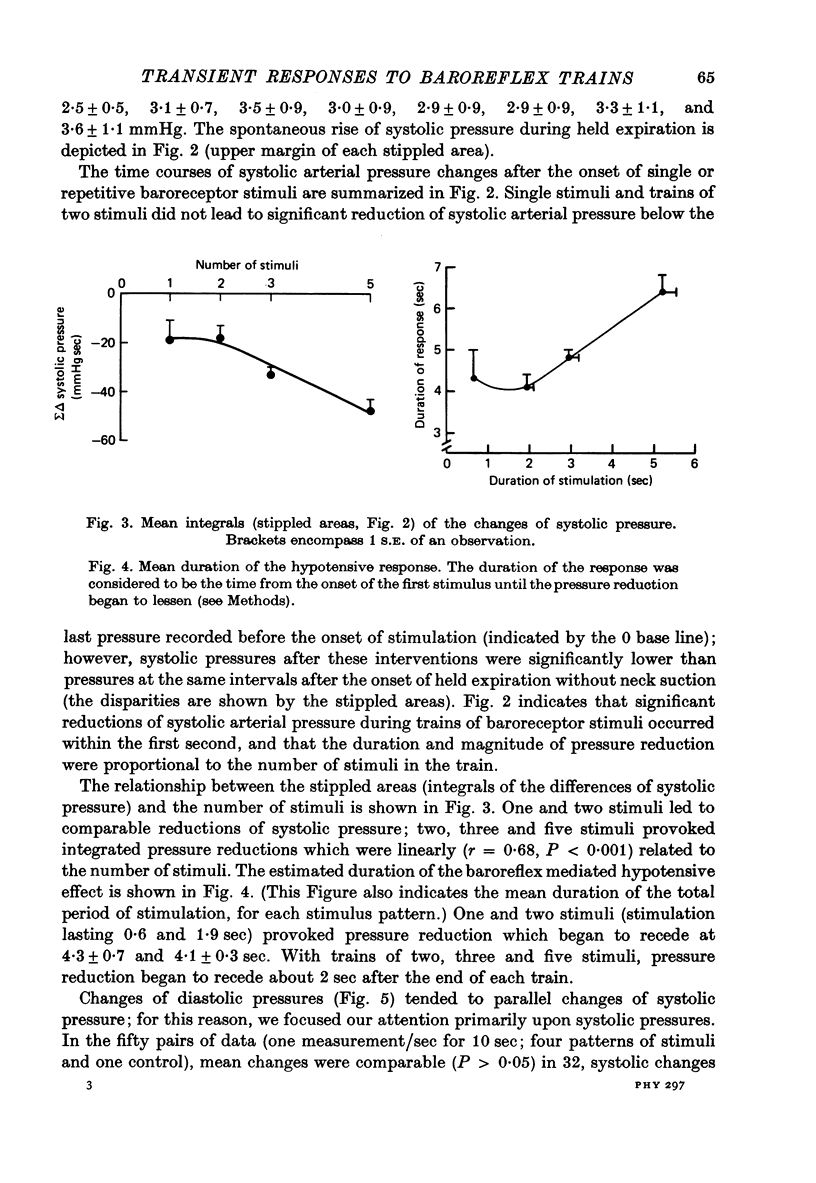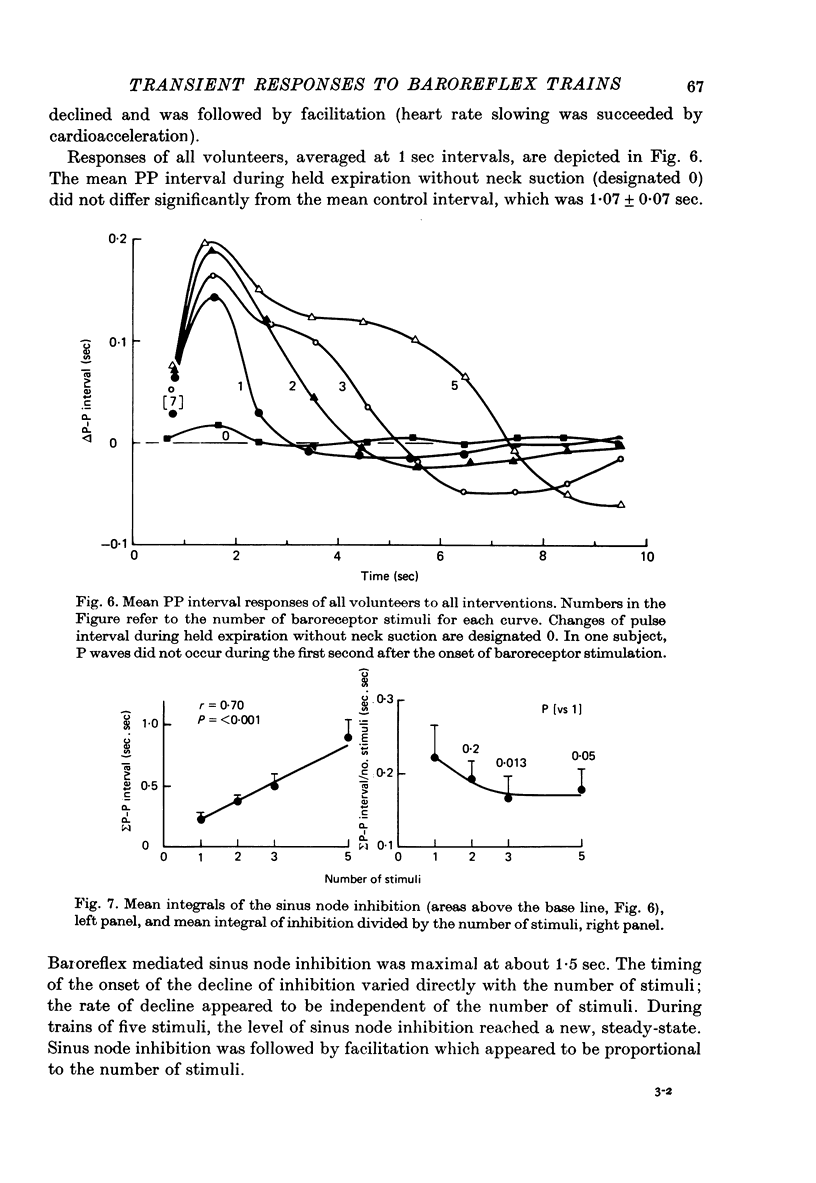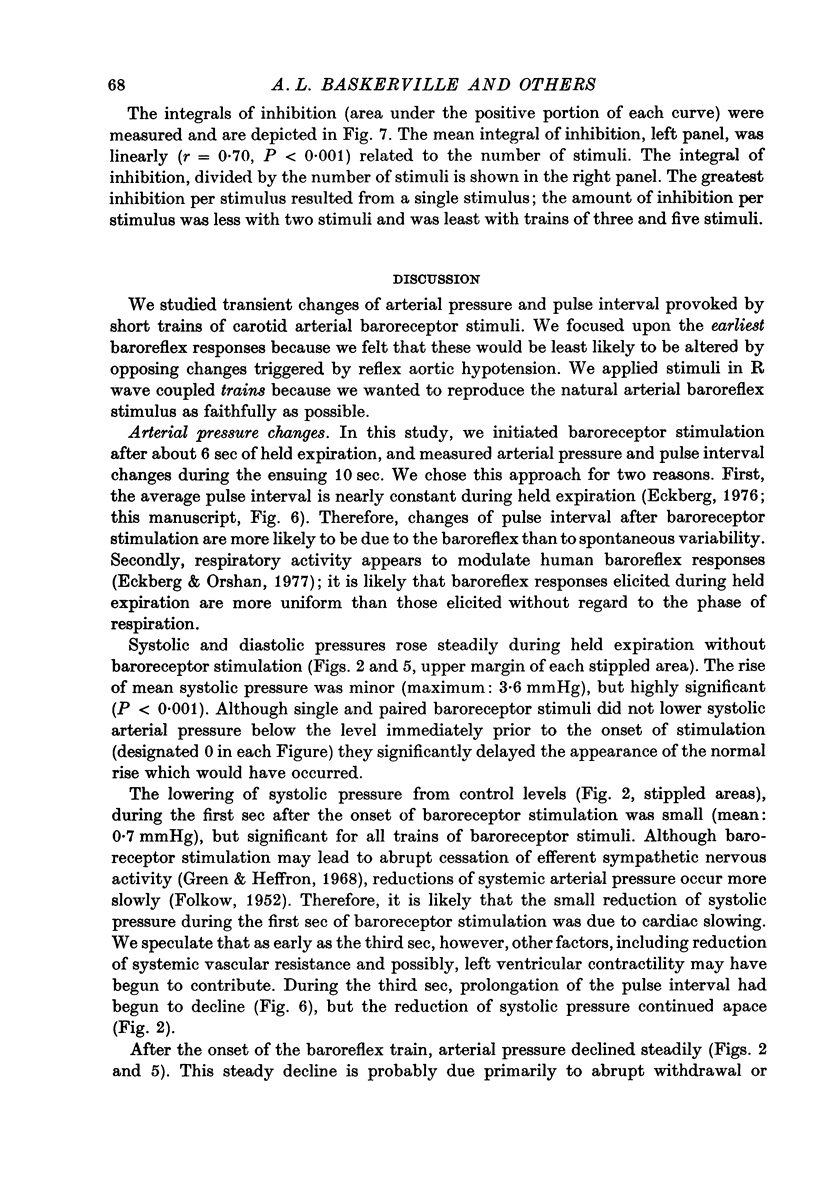Abstract
1. Carotid baroreceptors of eight healthy young men were stimulated with brief (0.6 sec), moderate (30 mmHg), single or repetitive (2, 3 or 5), R wave coupled neck suction during held expiration, and brachial arterial pressure and pulse interval changes were measured for 10 sec. 2. Mean systolic arterial pressure declined significantly from control levels after single or multiple baroreceptor stimuli. The reduction of systolic pressure was significant within the first sec after the onset of trains of baroreceptor stimuli; its duration was proportional to the number of stimuli. 3. The sinus node response to a single baroreceptor stimulus was biphasic: inhibition was followed by less intense, but more prolonged facilitation (cardio-acceleration). A single baroreflex stimulus modulated sinus node function for about 7 sec. The integral of sinus node inhibition was linearly related to the number of baroreceptor stimuli. Inhibition with five repetitive stimuli peaked at about 1.5 sec after the onset of stimulation and delcined to a new steady-state level during the period of baroreceptor stimulation. 4. Human baroreflex adjustments of arterial pressure and sinus node function occur very early after a step increase of phasic baroreceptor afferent activity. The perturbation of sinus node function is complex and probably reflects changing temporal relationships between the arterial pulse and sinus node activity, and interactions between oscillating levels of acetylcholine and sinus node responsiveness to acetylcholine.
Full text
PDF










Selected References
These references are in PubMed. This may not be the complete list of references from this article.
- Brown G. L., Eccles J. C. The action of a single vagal volley on the rhythm of the heart beat. J Physiol. 1934 Sep 19;82(2):211–241. doi: 10.1113/jphysiol.1934.sp003176. [DOI] [PMC free article] [PubMed] [Google Scholar]
- Eckberg D. L. Baroreflex inhibition of the human sinus node: importance of stimulus intensity, duration, and rate of pressure change. J Physiol. 1977 Aug;269(3):561–577. doi: 10.1113/jphysiol.1977.sp011915. [DOI] [PMC free article] [PubMed] [Google Scholar]
- Eckberg D. L. Carotid baroreflex function in young men with borderline blood pressure elevation. Circulation. 1979 Apr;59(4):632–636. doi: 10.1161/01.cir.59.4.632. [DOI] [PubMed] [Google Scholar]
- Eckberg D. L., Cavanaugh M. S., Mark A. L., Abboud F. M. A simplified neck suction device for activation of carotid baroreceptors. J Lab Clin Med. 1975 Jan;85(1):167–173. [PubMed] [Google Scholar]
- Eckberg D. L., Orshan C. R. Respiratory and baroreceptor reflex interactions in man. J Clin Invest. 1977 May;59(5):780–785. doi: 10.1172/JCI108699. [DOI] [PMC free article] [PubMed] [Google Scholar]
- Eckberg D. L. Temporal response patterns of the human sinus node to brief carotid baroreceptor stimuli. J Physiol. 1976 Jul;258(3):769–782. doi: 10.1113/jphysiol.1976.sp011445. [DOI] [PMC free article] [PubMed] [Google Scholar]
- Green J. H., Heffron P. F. Studies upon the relationship between baroreceptor and sympathetic activity. Q J Exp Physiol Cogn Med Sci. 1968 Jan;53(1):23–32. doi: 10.1113/expphysiol.1968.sp001942. [DOI] [PubMed] [Google Scholar]
- Spear J. F., Kronhaus K. D., Moore E. N., Kline R. P. The effect of brief vagal stimulation on the isolated rabbit sinus node. Circ Res. 1979 Jan;44(1):75–88. doi: 10.1161/01.res.44.1.75. [DOI] [PubMed] [Google Scholar]


